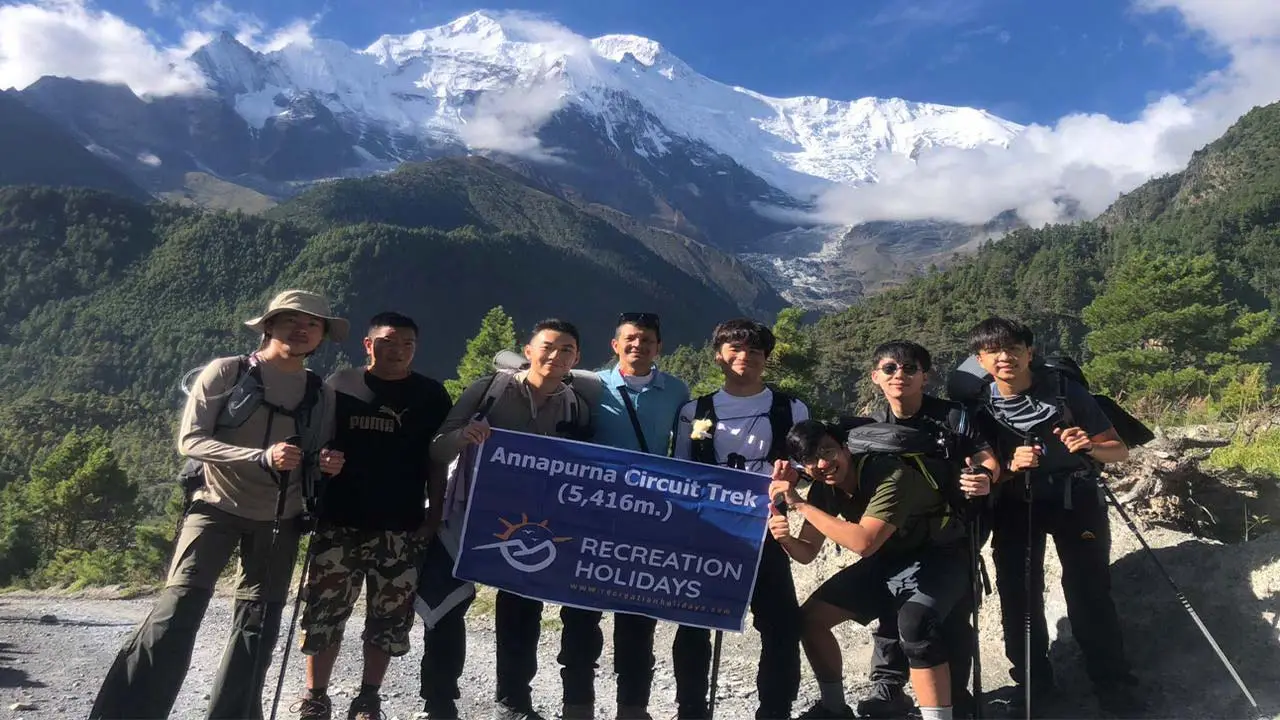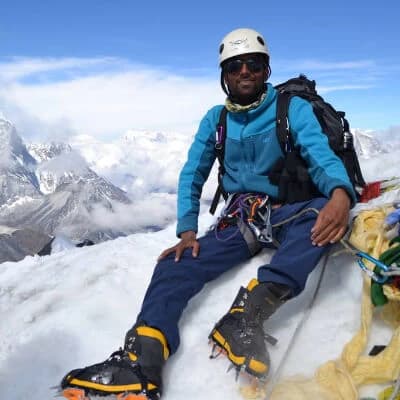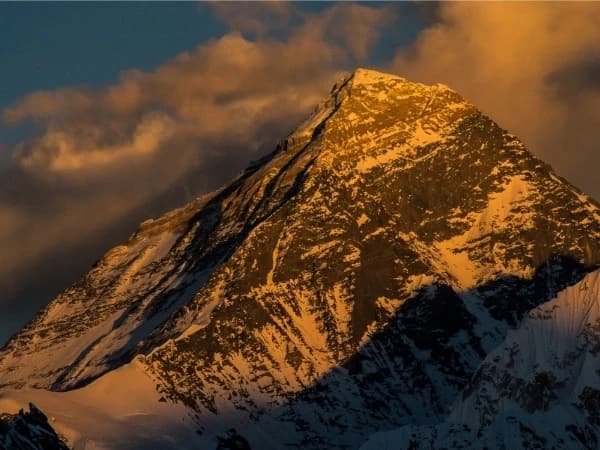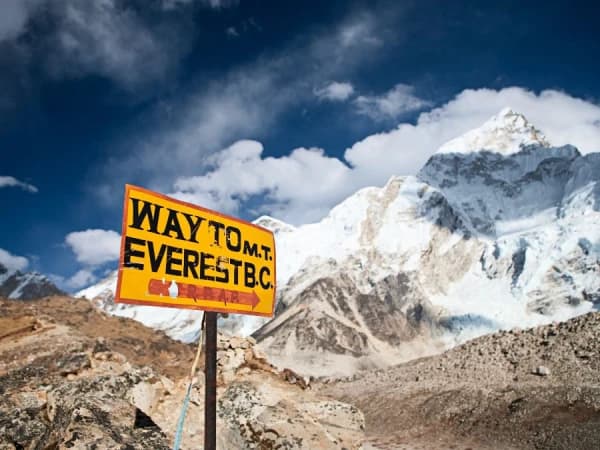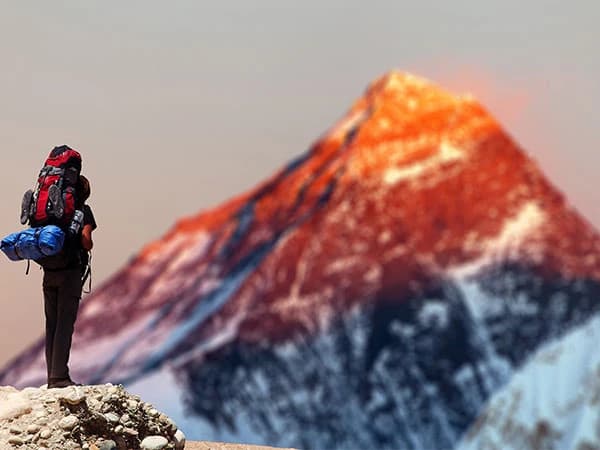Key Facts & Distance of Annapurna Circuit
Before answering your question on how long the Annapurna Circuit Trek takes here are some of the key facts and distances which help you to know some of the basic facts of the trek
- Total Distance: The Annapurna circuit trek is usually 160 to 230 kilometers which is 100 - 145 miles long. The exact trek length depends on the starting point, the ending point, and the added side tours
- Highest point: The trek crosses Thorong La Pass, which is at an altitude of 5,416 meters (17,770 feet ). This is the highest point of the route and it is also a big reason why acclimatization days are important on your trek.
- Walking Hours Per Day: On average, Most of the trekkers walk 5 to 7 hours daily. Sometimes walking hours may be extended or shortened. You may need longer days around the high pass.
- Terrain: As your journey will start in the lower green valleys then you will be moving through forest and farmlands. You have to climb into dry alpine zones and windswept high passes. On the way down the trail, you take you through the cultural Mustang region before connecting to road access.
- Road Access: In recent years, various new roads have been constructed in different parts of the trails. This means that you can use jeeps or buses which will help to shorten the route. This type of easy road access will help you cut down both distance and time.
Details mentioned above will make it clear why the Annapurna Circuit trek does not have a fixed duration. As the trail is a mixture of landscapes, altitudes, and transportation options, this means that the trek can feel different for every traveller.
Annapurna Circuit Trek Typical Duration /Time Ranges
Most of the trekkers spend 12 to 14 days on the Annapurna Circuit. This time frame will provide you enough space for walking at a steady pace, adjusting to the altitude, and enjoying the landscape without rushing. Here are some of the common time frames :
- Standard /Classic Trek (10 to 12 days ): Most of the trekkers spend around two weeks. This time frame includes one or two days of acclimatization, usually it may be in Manang. This standard /classic trek will allow you a steady pace so you do not need to rush through the villages. You can also minimize the risk of altitude sickness.
- Shorter /Fast-Paced Trek (10 - 12 days ): If you want to trek on the Annapurna Trails but have less time, you can complete the trek through a shorter/ fast-paced trek. In this time frame, you can start your trek further along the route by using a jeep or bus. You can add longer walking hours each day. You can also reduce fewer nights in the villages. This option is only recommended if you are a fit trekker not minding a tighter schedule.
- Extended/ Relaxed Trek (17 to 20 + days ): Some people take their time to complete their trek by adding side trips like Tilicho Lake or Poon Hill. You can also keep extra rest days for yourself. This trip can be extended into 17 to 20 days or more. This will be a perfect time frame if you want to enjoy the scenery at a slower pace.
- Ultra-Shortage Options (7 to 9 days): With the help of road transport and careful planning, it's possible to finish a compressed version of the trek. It can be completed in 7 to 9 days. These itineraries will make you skip many villages. You can reach the high pass directly. Even this time frame is possible, but it is very demanding and not recommended for first-time trekkers at high altitude.
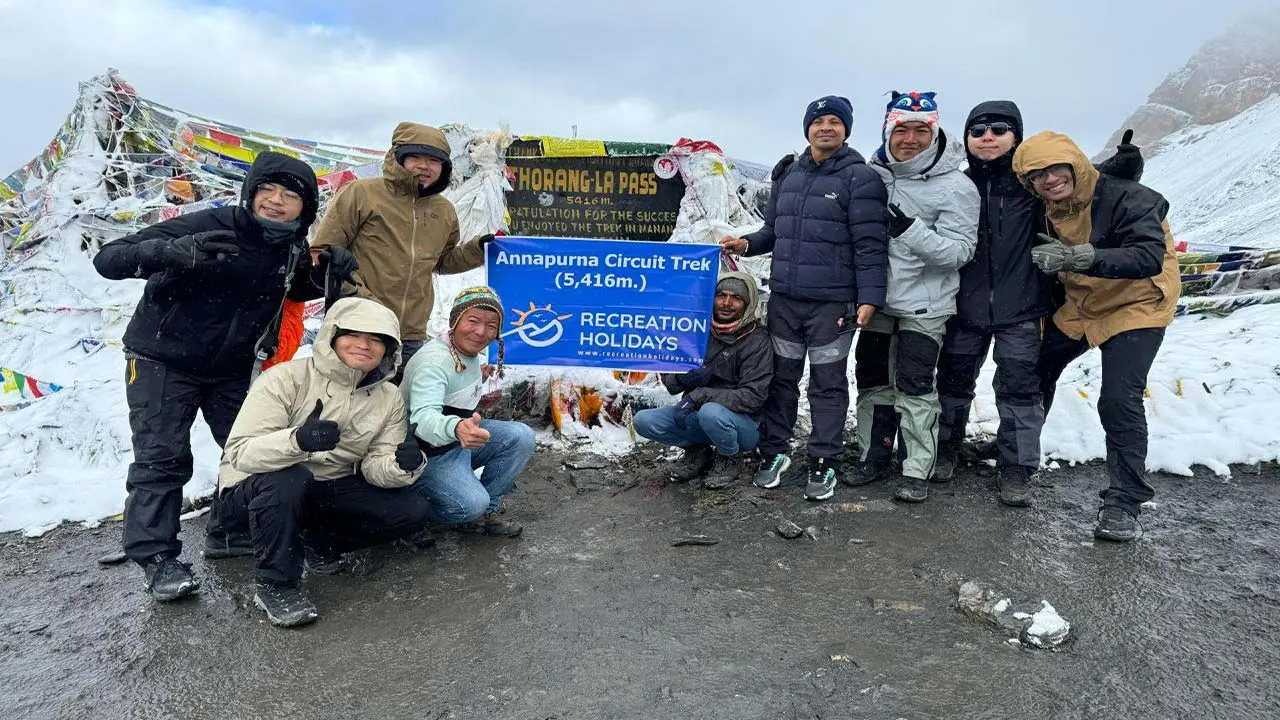
Sample Itineraries for Annapurna Circuit Trek
The Annapurna Circuit Trek can be completed in different ways. It depends on your time, pace, preparation, and side trips. Three examples show you how your trek might look :
12-Day Standard Itinerary
The Annapurna Circuit Trek 12 Days is the standard length package for this circuit route. Your journey starts in Kathmandu and you will maintain a gradual pace. There is also an acclimatization day at Manang, where you will make a stop before pushing to higher elevations.
Day 1: Arrive in Kathmandu (1,345m/ 4,412ft) and transfer to a hotel
Day 2: Drive from Kathmandu to Dharapani (1,860m/ 6,102ft)
Day 3: Trek from Dharapani to Chame (2,610m/ 8,562ft)
Day 4: Trekking from Chame to Pisang (3,300m/ 10,826ft)
Day 5: Trek from Pisang to Manang (3,540m/ 11,615ft)
Day 6: Acclimatization day in Manang
Day 7: Trek from Manang to Yak Kharkha (4,060m/ 13,320ft)
Day 8: Trek from Yak Kharkha to Thorong Phedi (4,525m/ 14,845ft)
Day 9: Descend from Thorong Phedi to Muktinath (3,800m/ 12,467ft) via Thorong La Pass (5,416m/ 17,770ft)
Day 10: Drive from Muktinath to Pokhara (827m/ 2,713ft)
Day 11: Drive from Pokhara to Kathmandu (1,345m/ 4,412 ft)
Day 12: International Departure
14–Day Side Extension Itinerary
The Annapurna Circuit Trek with Tilicho Lake is a 14-day itinerary plan that goes beyond the standard circuit trekking route. After an acclimatization day in Manang, you will hike to Tilicho Lake via Siri Kharka. This side extension offers you the chance to explore one of the highest lake in the world.
Day 1: Arrival in Kathmandu International Airport, Kathmandu (1,400m/ 4,593ft)
Day 2: Bus journey from Kathmandu to Dharapani (1,860m/ 6102ft)
Day 3: Trek to Chame (2,610m/ 8562ft) from Dharapani (1,860m/ 6,102ft)
Day 4: Trek from Chame (2,610m/ 8,562ft) to Pisang (3,300m/ 10,826 ft)
Day 5: Trek from Pisang (3,300m/ 10,836 ft) to Manang (3,540m/ 11,615ft)
Day 6: Acclimatization Day in Manang
Day 7: Trek from Manang to Siri Kharka (4,050m/ 13,325ft)
Day 8: Trek from Siri Kharka to Tilicho Base Camp (4,140m/ 13,583ft)
Day 9: Trek from Tilicho Base Camp to Tilicho Lake, then back to Siri Kharka (4,950m/ 16,120ft)
Day 10: Trek from Siri Kharka to Yak Karkha (4,040m/ 13020ft)
Day 11: Trek from Yak karkha to Thorong Phedi (4,420m/ 14,050ft)
Day 12: Trek from Thorong Phedi to Mukhtinath (3,800m/ 12,467ft) via Thorong La Pass (5416 m/ 17,764ft)
Day 13 : Travel from Mukhtinath to Pokhara (827m / 2,713ft)
Day 14: Drive from Pokhara to Kathmandu by tourist coach
Day 15: Find departure from Kathmandu, Nepal as per your flight

10–day Shorter Itinerary
Compared to the other two, the 10-day Short Annapurna Circuit Trek is the shortest and safest version to explore this second mainstream route in the Nepali Himalayas. This package covers only the itinerary for the trekking part. During the trek, you will follow a well-managed pace and also enjoy an acclimatization day at Manang.
Day 1: Travel from Kathmandu to Dharapani (1,860m/ 6,102ft)
Day 2: Trek to Chame (2,610m/ 8,562ft) from Dharapani (1,860m/ 6,102ft)
Day 3: Trek from Chameto Pisang (3,300m/ 10,826ft)
Day 4: Trek from Pisang to Manang (3,540m/ 11,615ft)
Day 5: Acclimatization Day in Manang
Day 6: Trek from Manang to Yak karkha (4,060m/ 13,320ft)
Day 7: Trek from Yak karkha to Thorong Phedi (4,525m/ 1,484ft)
Day 8: Cross Thorong La Pass (5416m/17770ft) and Trek to Mukhtinath (3,800m/ 12,467ft)
Day 9: Travel from Mukhtinath to Pokhara (827m / 2,713ft)
Day 10: Drive from Pokhara to Kathmandu.
Factors That Affect How Long Annapurna Circuit Takes
The number of days you spend on the trails of the Annapurna Circuit is not fixed. Several factors play a vital role in making your trek shorter or longer.
- Starting and Ending Points: If you start your trek from Beshisahar, it adds more walking days compared to other starting points like Chame or Manang. Finishing your trek at Jomsom instead of Nayapul can help save your time. It will be so easy, especially for those who plan to fly to Pokhara.
- Side Trips and Detours: If you are planning to explore Tilicho Lake or other villages along the way. These can add two or three extra days. If you skip side trips, then it will keep your trek shorter and the trips will also become a little less tiring.
- Daily Walking Pace: Some of the trekkers prefer to walk 5 to 6 hours per day and others go around 7 to 8 hours per day to finish the trail faster. Faster walking may reduce your total days, but walking fast in high altitudes can be exhausting.
- Acclimatization Needs: Altitude can affect your pace; it will be easy to adjust your body if you take a rest day in Manang or any other high village. It will also help you to deal with altitude sickness. Skipping rest days may make your trek shorter, but it increases the chances of altitude sickness.
- Weather and Season: Autumn (Sept-Nov) and Spring (Mar-May) are recommended as the best seasons for trekking. These seasons will offer you stable weather and also help to make your trek predictable and amazing. The monsoon (June-August) season brings rain, occasional landslides, and trails become slippery, which makes your trip slower. Winter (Dec-Feb ), there may be snow on high passes. Snowy trails will bring extra caution by adding extra days.
- Transportation Options: If you use jeeps or buses for certain sections, then it can cut off your walking days. Some of the trekkers combine trekking with flights from Jomsom to Pokhara for convenience and time saving.
Helpful Tips for Planning Your Trek Duration
If you plan how long to spend on the Annapurna Circuit, that can make your journey easier and more adventurous. Here are some of the practical tips that help you make your trip memorable.
- Decide Your Daily Walking Hours: If you prefer short and easy walks then you should plan for 5 - 6 hours per day. If you are on a busy schedule, finishing faster than 6- 8 hours per day is also possible. Walking for many hours can be tiring at high altitude.
- Include Acclimatization Days: You should mark at least one rest day in Manang or another high village, which is recommended. Planning extra acclimatization days will help you prevent altitude sickness. It also makes the trek much safer.
- Choose Starting Point Wisely: You should choose your starting point wisely. Making your starting point gives you a full experience, but extra days are added. If you start from Chame or Manang, it will reduce the duration of your trek for a busy schedule.
- Plan Side Trips Carefully: You should decide earlier whether to include hikes like Tilicho Lake or Poon Hill. Adding side trips will enrich your experience but add extra days.
- Use Transport When Needed: Taking buses, jeeps, and flights when they are accessible can save time when your schedule is short.
- Check the Season and Weather: Autumn and Spring are the best times to get stable trails and clear skies. You should avoid trekking during the monsoon unless you are flexible for delays.
- Stay Flexible: During the trek, altitude, weather, and trail conditions may bring changes. You should build 1 to 2 buffer days into your plan which will help you to avoid stress
These will be helpful tips for you for planning your trek. Our helpful tips will help you choose a realistic itinerary and enjoy the trek. This way you can complete your trip, making it memorable without any rush and overexerting yourself,

Conclusion
So, how long does the Annapurna Circuit take? The answer will depend upon your pace, routes, side trips, and acclimatization needs. Most of the trekkers spend 12 to 14 days on classic circuits, while shorter versions can be completed in 10 to 12 days. Some prefer extended itineraries, which may take 17 to 18 days or more sometimes.
The main key is to plan everything according to your fitness, interests, and time schedule. Fast treks offer you to see highlights quickly and slower treks will offer you more time. You can explore villages, side trips, and the stunning landscapes.
You should remember that the Annapurna Circuit is more than just several days. It doesn't matter which plan you choose. It will be your unforgettable journey. You will forever remember the most breathtaking mountains in the world. So take your time, stay safe, and enjoy every step.
“ Time fades, but the mountains and the moments you share with them will always stay with you.”
